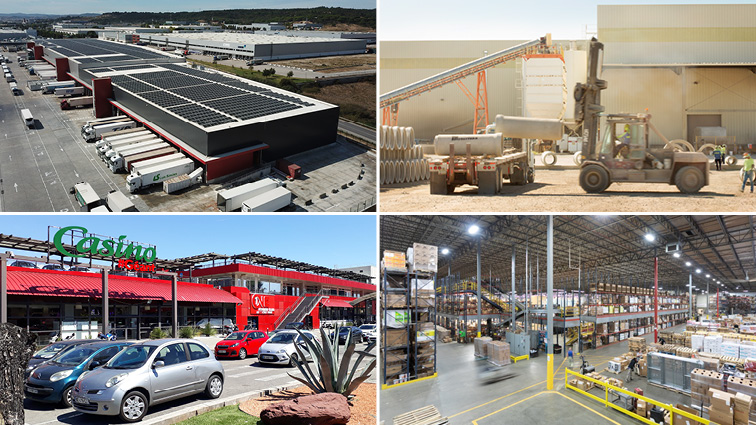Sale-leasebacks Are Back!
Industrial volume continues to surge as office and retail make a comeback of their own
The sale-leaseback market is booming. Strong fundamentals including low interest rates, outsized demand for high-quality assets, an active M&A market and significant amounts of capital driven by cheap debt and strong currency make now an opportune time for sellers to execute a sale-leaseback and unlock otherwise illiquid capital tied up in their real estate. According to data from SLB Capital Advisors, sale-leaseback activity increased 17% in Q2 from the previous quarter, reaching $3.6 billion–the second highest in terms of deal volume since before the pandemic in Q4 2019. With interest rates unlikely to rise in the short term and property valuations being pushed higher as new investors enter the sale-leaseback market, we expect this high level of activity to continue into 2022. However, within the broader sale-leaseback market, each core property type–industrial, office and retail–faces unique headwinds and tailwinds, presenting new challenges and opportunities across each. Here’s how we think each will fare in 2022.

The Industrial Surge
The industrial real estate market continues to be one of the strongest sectors fueled by tailwinds related to the growth of e-commerce, including increased inventory requirements and record-low vacancy rates. These strong fundamentals mean that investor demand for industrial sale-leasebacks will only increase, particularly as new entrants enter the market. We are already seeing the effects of this–but as more entrants enter, the imbalance between the product available and demand for assets will continue to widen, driving prices higher and cap rates lower–even in traditionally non-core industrial markets. In addition, a lag in new development due to increased material and labor costs will keep real estate valuations for existing assets high. As a result, we don’t see the industrial market slowing any time soon–creating immense opportunity for sellers to maximize the value of their real estate through a sale-leaseback.
Growing Office Optimism
While office has certainly been a dark horse in the real estate market due to lockdowns and work-from-home mandates, there’s some optimism on the horizon going into 2022. Several big tech companies such as Google, Facebook and Amazon, have made investments in NYC office space this year, sparking early signs of recovery in the sector. In addition, Sun Belt markets such as Texas and Florida–where many urbanites migrated during the pandemic–are seeing an increase in demand for offices supported predominantly by the small and mid-size businesses located in those regions. For potential sellers, these are all positive signs and suggest that investor demand for certain office assets will rise in 2022, particularly for high-quality properties in strong markets leased to investment-grade tenants.
Retail's Road to Recovery
Similar to the office market, retail is seeing a recovery from COVID-19 pandemic lows. Retail foot traffic and sales continue to increase, but the rise of e-commerce has certainly left a lasting impact on the industry as a whole, as most retailers are now implementing hybrid store models which include both brick-and-mortar stores and online distribution. In the next few years, many retailers will likely reevaluate their portfolios in terms of number of stores, location and use–and many may downsize as online orders become a greater proportion of their sales. As a result, the overall level of occupied retail space will likely shrink, meaning the market will favor corporate sellers and tenants. In addition, we expect investor demand for essential retail such as grocery and quick-service-restaurants will remain strong in 2022, as those sectors have demonstrated exceptional resiliency during the pandemic and resulting economic downturn. We’ll likely also see an increase in volume of retail sale-leasebacks in Europe, particularly for those essential assets, as US-based investors expand into new markets to take advantage of different costs of capital.

What's Next
Overall, the outlook for sale-leasebacks remains positive across all three core property types, with 2021 shaping up to potentially be a record year for deal volume. As long as the market fundamentals remain strong, corporate sellers pursuing a sale-leaseback will be able to secure high valuations for their real estate assets while locking in current low rates for the long term. Working with an experienced sale-leaseback investor such as W. P. Carey ensures sellers unlock 100% fair market value of their assets–which can be reinvested into growth initiatives–and also provides a long-term capital partner that can support future real estate needs.

Related Topics:
You May Also Like:

- Recently Added
- WPC in the News
Sale-Leaseback Activity Expected to Grow as Capital Conditions Improve in 2026
After a slow start, sale-leaseback activity saw a resurgence in the second half of 2025. Early in the year, activity was dampened by uncertain fundamentals and macroeconomic headwinds, but...
- Recently Added
- Thought Leadership
From Volatility to Resilience: Net Lease Real Estate in 2025
2025 marked a turning point for the net lease real estate market, driven by three defining trends: interest rate relief, cap rate stabilization and an increased focus on mission-critical assets....